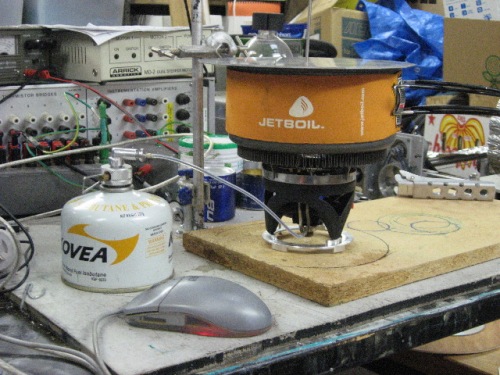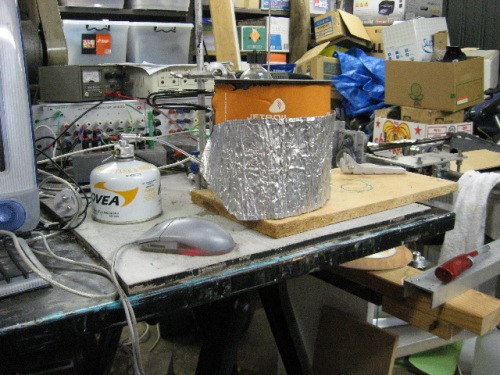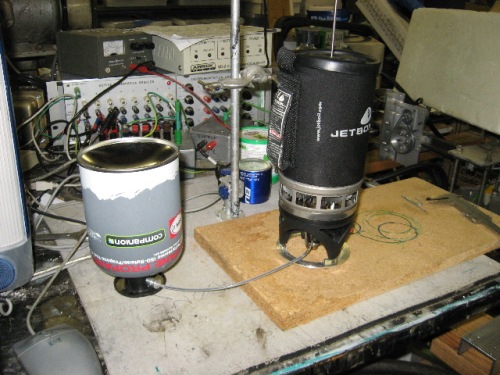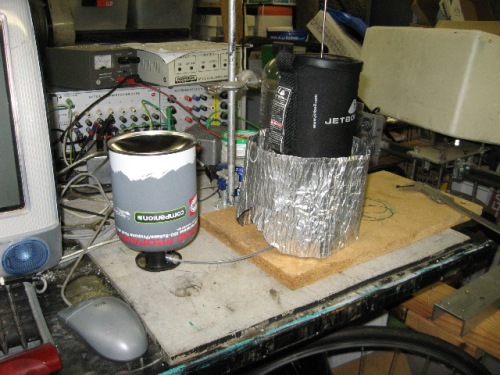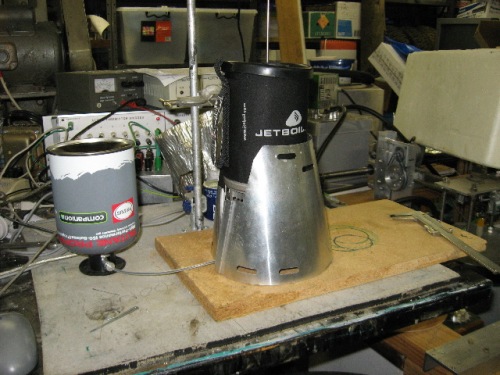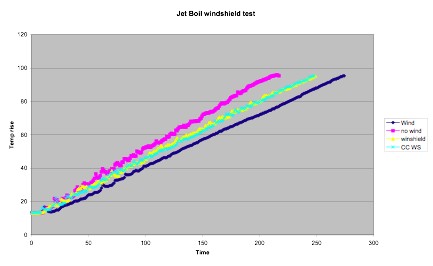These wind tests were done on my Trangia 27-1 using a Kovea Ti Supalite stove that has been modified by adding a pre-heat tube and stand, this allows the stove to be used in a remote canister configuration with the Trangia windscreen and base, the holes in the base were positioned away from the wind. The pot used was the 1 liter 27-1 Trangia pot.
The tests were done with the canister in an upright position, to get consistency I put an adjustable valve on the canister and ran the stove until the flame was at a fairly high stable level I then only used the valve on the canister to turn the stove on and off.
I placed stove on the test bench, I then placed the thermistor in the pot at 1 cm from bottom, started data logging program and at 10 second I turned the gas on and lit the stove, when water temperature reached 95º I turned the stove off, removed pot and re-weighed canister, noting the new weight. From logged data start temp was noted and fuel used, the fuel used was then normalized to grams of fuel used per 80º (g/80C)
Results
Test 1, no wind, windscreen
Fuel used in grams per 80ºC = 7.5g
Test 2, wind with windscreen, stove was lit, then fan turned on.
Fuel used in grams per 80ºC = 7.3g
Test 3, wind, no windscreen, During this test it was obvious that it this system is greatly effected by wind and to raise the water to 95ºC was going to take some considerable time and fuel, I stopped the tests at the same time as the no wind test and as the heating rate is usually linear I extrapolate the results.
Fuel used in grams per 80ºC = 53.0g
Test 4, the holes in base are placed into wind.
Fuel used in grams per 80ºC = 8.2g
Discussion of results.
As can be seen from the fuel used in the wind/no windscreen test the Kovea stove efficiency was affected quite a lot by wind but the use of the Trangia windscreen does improve the efficiency to the point where if used correctly, wind may have a very small affect on efficiency, the difference between the results of the no wind and wind/windscreen tests is very small the difference could be considered in normal testing error.
Conclusion.
The Trangia stove system with its inbuilt windscreen is very good in windy conditions but it is preferable to place the holes away from the direction of the wind.



